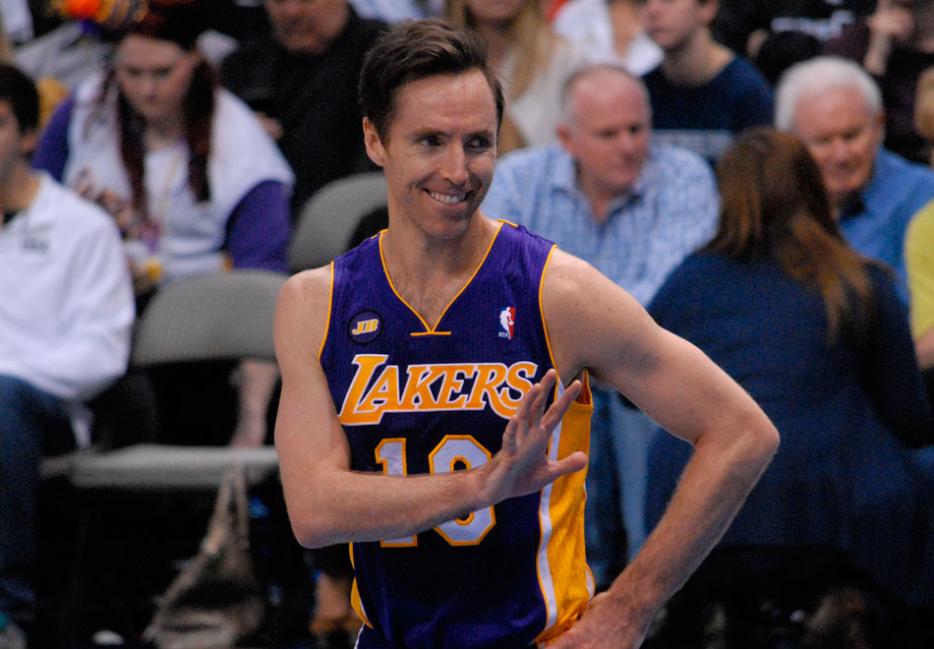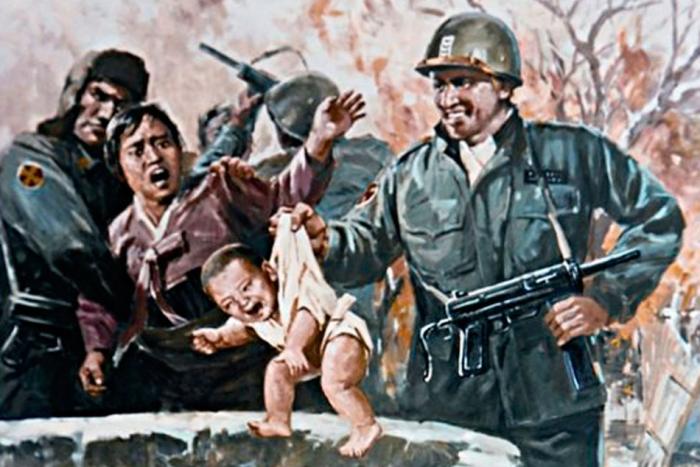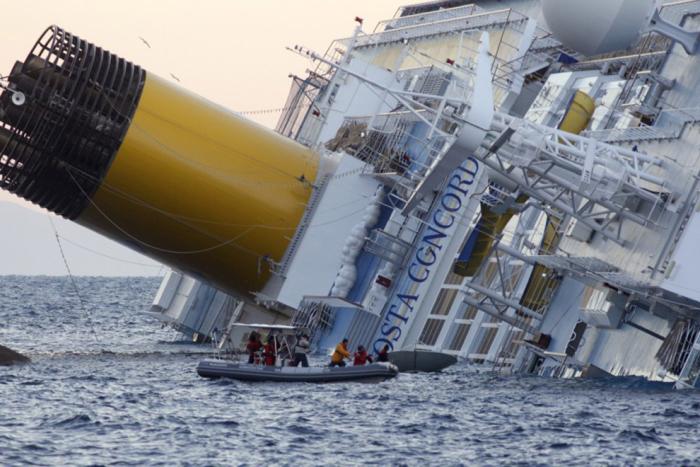A hometown is a peculiar thing: where the mysterious becomes all too ordinary, but in absence, sometimes mysterious again. Occasionally you just want a little bit of childhood wherever it is that you’ve built your adult life. This is why you buy tickets to certain games early, and put them on your refrigerator so you can look at them every day until the day itself—when you go down to the arena to see a team come out of the tunnel wearing a jersey with a name on the front that might once have been your return address. Last season, I had that anticipation: to see Steve Nash take the court in Toronto (where I live) wearing the jersey of the Phoenix Suns (where I grew up), and I could stand and cheer with impunity because he’d also be entering to the ovation of his home country’s fans.
That game, of course, was canceled. A casualty of the NBA’s lockout and a resulting shortened season in which the Raptors would visit Phoenix, but Canada’s greatest basketball player would miss Toronto. This is like Men at Work’s record label canceling the Australian portion of their tour. Nonetheless, I prepared to pencil in Nash’s next visit the following season. The only problem, as it turned out, was that Steve Nash would no longer be wearing a Suns jersey.
Like many, I have loved a team as long as I can remember loving anything. We moved from Canada to Arizona before I was two, so one of my earliest sports obsessions was a Suns poster on my bedroom wall with a shot of each player in a (non-sweaty) staged pose. It’s one of 8,000 similar things I wish I still had. Our family seemed to agree on a few favorite players, like Dennis Johnson, who was traded away too soon—and who left us all too soon (DJ made it into the Hall of Fame posthumously). Another favorite was point guard Kyle Macy. He’s not in the pantheon of greats, but at the time he was a young player with promise, he’d been the leader of a college championship team at Kentucky, and he was a great shooter. In fact, he was the Suns franchise leader in free-throw percentage for about two decades—until Nash took over (I had the best of mixed feelings). This simple, boring stat is one that the post-athlete can hang onto. Because despite being outclassed in height, weight, athleticism, and determination, most of us like to think that if we could do one thing, it would be to hit foul shots consistently (doubtful).
Macy later signed with Chicago and in compensation the Suns received two scattered second round picks, the latter of which was used to draft a player they traded the same day for the rights to another who would play only seven games for them five years later. This is what happens to your favorite players sometimes: they disappear into what seems like bureaucracy. It becomes hard to know if they were ever as good as you thought they were, but as we know, memory does not grow longer, it grows taller. Still, there were other point guards who followed. Great ones. Kevin Johnson, Jason Kidd, even Stephon Marbury. And then finally, Steve Nash. The unexpected engine in a fast-break style of play that can’t seem to win it all but that so many fans want to. Just once.
Johnson got the closest to a title in Phoenix. DJ had won a title in Seattle and won two more in Boston after switching to point guard (Boston had beaten the Suns in the 1976 finals). Kidd won a title two years ago with Dallas (who knocked the Suns out of the 2006 conference finals). Marbury just won a title in China, even. Like all of them, Nash left the Suns without a championship: his legacy is more the memory of a devastating pick and roll with Ama're Stoudemire, unbridled potential energy whenever he received the inbound pass, and a series of heartbreaking moments I’d rather not revisit. His last chance to win a championship is instead with a mortal enemy—the Los Angeles Lakers. And so I decided to conduct an investigation into sports misery.
*
A few days prior to the Lakers visit, I overhear a conversation on the streetcar that ends with the following exchange: “I want Nash to get a ring,” and then his friend, “If he gets a ring, he’s coming to Toronto.” History hasn’t been any kinder to the Raptors fans. Their name. Vince Carter. Their name. They’ve won exactly one playoff round so far: I have a vague memory of that year during a visit to Toronto, standing on Yonge Street as the Raptors got set to play game seven against the 76ers. A car came roaring up the hill on four cylinders with two Raptors flags waving and horn honking. The woman behind me watched them go past and quietly said, “rrrrrrrrrrrrrrrrrrrrrRaptors.” It was hard to witness without the implicit counterpoint of the Leafs in the same scenario (absolute mayhem). But then, I cheer for the Suns, backhandedly known as the “best franchise without a championship,” and one whose managment has in recent years wasted the coveted first-team status in its own city. Who knows, maybe the Raptors will hold that next parade on Yonge Street before the Leafs do. (My editor says “no way” to this with a double underline, which may say more about irrepressible Leafs fandom than anything else.)
I make my way to the Air Canada Centre, which has a somehow vague location. Between the railroad tracks and the expressway, it doesn’t sit on a classic intersection like Clark and Addison, Atwater and St-Catherine, or Carleton and Church. You can’t really get a vantage on it the way you could with Maple Leaf Gardens. It’s a building that, in its inconspicuousness, might even do a disservice to its generations of fans. But then, a title tends to erase this kind of nostalgia. As I find my seat, I pass a couple of orange Nash jerseys with the familiar number 13. It’s a late-arriving crowd: Los Angeles is allegedly the city with the most Canadians south of the border, and I wonder if there has been some sort of exchange for a group of famously unhurried Lakers fans. But from my perch in the upper corner, I see that the crowd is in fact dotted with gold jerseys, early arrivals who stand as the Lakers take the court—including a point guard with new hair wearing an unfamiliar number 10. The comparisons have been made: It’s like seeing Gary Payton in a Lakers jersey. It’s like seeing Karl Malone in a Lakers jersey. Or any franchise player who’s gone to Los Angeles: O’Neal, Kareem, Chamberlain (whose retired number is the reason Nash is wearing 10).
The opening of the game, however, does seem familiar. Nash passes the ball to Gasol, who gives it back to him off a screen, and Nash drives for a layup. It looks like Seven Seconds or Less, the offense Lakers coach Mike D’Antoni preached in Phoenix. The offense that “almost” almost won. This took about twelve seconds, and smelled a little scripted, but it’s vintage Nash and the fans appreciate it. The score, however, quickly goes the other way, ballooning to 11-2 and then 19-4 for Toronto. There are moments for the Lakers: Nash misses a fadeaway jumper, but Earl Clark (another former Sun starting for the Lakers after not really getting a chance in Phoenix) grabs an offensive rebound and it puts it in. Following a Toronto score by DeRozan, Nash answers quickly with a three pointer. But then the Lakers are called for a delay of game, and Calderon hits a jumper to make the score 27-12.
The Lakers close the gap in the second quarter, pulling within four, and then Dwight Howard (dominant centers can’t stay off the Lakers roster forever) is called for a second technical foul and ejected—the most important play of the game, made by an official—and the fans jeer him as he walks off the court. The Lakers cut the lead to two, but Calderon hits another jumper, and right afterwards, Nash turns the ball over to end the half. It’s Calderon, playing for his next contract and not his legacy, who looks like the hungrier point guard, and he’ll finish with 22 points.
(Just ten days after the game, Calderon will be traded as part of a three-team deal that brings Rudy Gay to Toronto. Calderon is not Nash, but there will undoubtedly still be many young fans in Toronto who need new jerseys. If my math is correct, Calderon will pass Macy in career points—by one—against Brooklyn in his second game for Detroit, and I will be the only person who knows it until this sentence is read.)
Nash isn’t necessarily Nash this year, either. Commentators have suggested he’s becoming a rich man’s Steve Kerr (at least they’re not saying John Paxson, Suns fans). But Nash becomes Nash again when he finally makes it to the line in the third. That same foul shot routine we’ve been watching for years. The pantomiming of the dribbling and the shots; the licking the fingers (gross, but I was always okay with it if it worked). He hits both, and again, if my math is correct, that free throw percentage just went up .00587%. Nash is the all-time leader, and by the end of the game, he will have quietly finished with a stat line right about his career average.
Late in the third, Kobe starts hogging the ball. Do I even know this for sure? That’s what his critics will say, and fans of any other team. He begins the fourth quarter with a technical foul, and you can sense the fans lusting for another ejection. With just over 8 minutes left, his shot is blocked by Amir Johnson, and it seems like the Raptors will hold their ground. The Lakers have a bit of life left though, with Nash hitting a three and Kobe hitting two more inside of a minute, and later an alley-oop to Gasol that could be a back-breaker in a different game, on a different day. But it’s not enough this time.
Only the Lakers fade spectacularly, and by some definitions, the end of the game should be a satisfying moment for me—but it’s not, not really. I start to wonder a little bit about how much sports schadenfreude is actually worth. Still, I can’t help questioning why the fans in front of me are leaving early, foregoing the satisfaction of seeing the clock hit 0.00. This was their win to savor. One of them had even bought a flag.
*
I don’t know why I care so much about sports sometimes. It can all seem a bit silly, and not any less silly to cheer for a team called the Suns than one with a name borrowed from Jurassic Park (the Raptors have also won both games against the Suns this year). I have enjoyed few championships, but then, a fan overly conscious of return-on-investment is a pretty shitty fan. Most of my sports memories have more to do with the friends who’ve watched with me: does it make me any happier when our team ultimately loses? No, but it makes me happier than watching a rival lose to someone else by myself. When I think of Nash’s time on the Suns, I think mostly about a few of my friends gathering in New York (my interim home for the 2000s) during the playoffs, far from where we grew up, a bit of childhood in those adult lives. Their apartments, and their soon-to-be-growing families, and how excited we were when we got there on game day. Because even if they didn’t win, in certain moments, it seemed like they might.
The game is on the road, and the score is close (probably in the fourth quarter). The opponents (probably the Spurs—always the Spurs—even calling them the Suns’ kryptonite has an irritating symmetry) take their full possession while the Suns defense desperately tries to hold on. (It’s games like these that made you wish Nash and DJ could have been combined into one.) The shot clock is almost empty when one of the Spurs (probably Ginobili) drives into the lane. Miraculously the Suns have someone there, stopping them for what seems like the first time all game. But with a couple of seconds to spare, he kicks it back out to the perimeter, where one of his teammates (probably Horry) launches a three pointer as the shot clock expires. It goes in, and the home crowd explodes. Nash takes the inbound pass, the crowd not letting up, knowing that the Suns are broken, knowing that they will have the ball stripped in the paint and not get the foul, knowing that they will not be able to get an uncontested mid-range shot, knowing that they will not be able to rotate fast enough against the Spurs’ ferocious defense for an open look in the corner. And before any of those things don’t happen, Nash pulls up mid-stride from two feet behind the line and nails a three to tie it. The crowd hushes for a moment, and in that moment my friend Jeff is saying, yes.
No one moves from their spots in the apartment. Superstitions, to a fan, are perhaps nothing more than tiny traditions: things that help you feel a part of your own life. But they linger. Just as sport is an abridged version of our history, told through the successes—and more frequently failures—of other men for whom for some reason we pretend to know well.
--





